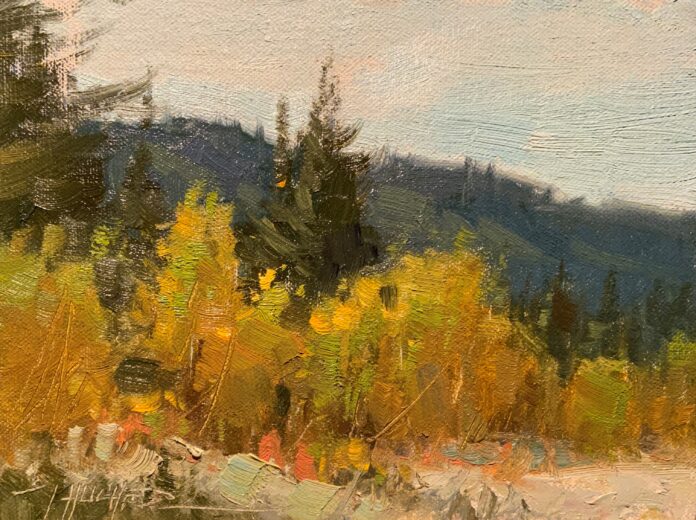
Loosen Up Your Brushwork with Half-Hour Drills
Do you ever wish that your brushwork was more spontaneous and free-flowing?
I’ve sometimes heard other artists, along with many of my workshop students lament that they wish they could quit being so tight with their brushwork.
On the other side of the spectrum, I’ve heard a different type of comment, typically by non-artists who have ‘an aunt or uncle who is so talented, that when they paint an animal, you can see every hair on the little critter’s back.’ The implication is usually that they have an artistic genius in the family and I should be impressed! Well, I usually grin and nod politely, because I don’t want to come across as a know-it-all artist with overbearing ideas on what really makes a good painting. You know, things like good design, a feeling of light and shadow, exceptional drawing, color, values, edges, and brushwork. Yeah, sometimes it’s just best to save the lectures for those who are interested in hearing what you have to say. Ha!
Which brings up brushwork…
This doesn’t mean all artists need to have juicy brushwork; certainly, there is a whole range of stylistic approaches that are welcome in the world of painting. But if you are interested in loosening up, I’ve got some ideas that may help you.
First, why is it the tendency of probably most of us to start out ‘tight’ in the first place? I suppose it has something to do with when we used to be admonished to color within the lines with our crayons as kids, but also it just came with the territory when we were learning to do something new, like painting. (Think of the first time you rode a two-wheeler and your knuckles turned white on the handlebars.)
Whatever the reason, it’s a habit that was most likely hard to break because we didn’t want to mess up our carefully thought-out creations. The process of painting also became a sort of white-knuckle ride to the finish line.
In my classes and workshops, I have a drill that is sure to help any artist overcome the stifling hesitation that causes their brush marks to be too tight. These are half-hour drills on a 5 x 7-inch or 6 x 8-inch panel.
To start, I take a page from my old figure and gesture drawing classes. After a quick demo, my instructions to the class go something like this:
Get your gear ready so everything you need is right there by your side. No searching around for your paper towels, brushes, paint, medium trash, etc. Have it all there so you are not tangled up with gear issues. Now, take a couple of minutes to draw in your design, but no more than two minutes before you set a timer for 30 minutes.
Next, it’s off to the races. Then stop, move away from your easel, and take a look at what you have painted.
In my classes, I have the students then view each other’s work. It’s always some of the best work they’ve done all semester, or during a workshop.
It’s a mind shift.
You have to train your mind to be content with the process. Let go of the ego and the need for perfection and let it happen. It’s almost like therapy. It’s very freeing, and best of all … it works! Do this painting exercise and see what I mean. The brushwork on your more careful endeavors will improve by leaps and bounds.
Try This: Half-Hour Painting Studies
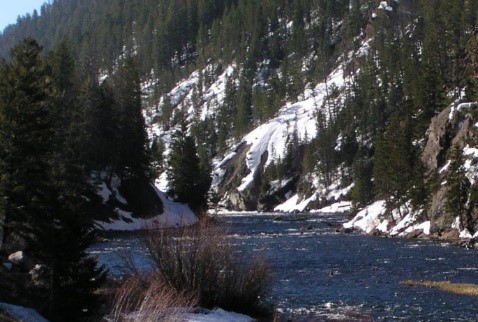
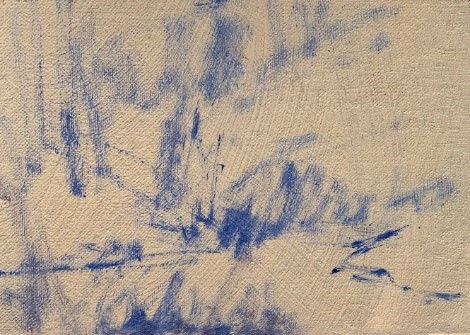
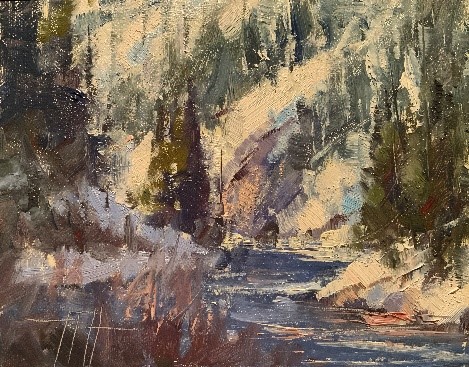
The brush and palette knife are used almost like a weapon in the painting exercise above. Aside from the initial drawing, nothing is thought out – it’s pure adrenalin from start to finish. You see a shape and quickly put it in, with no finesse or hesitation. If you make a mistake, you just cover it over on the next pass, or scrape quickly with a swipe of the palette knife.
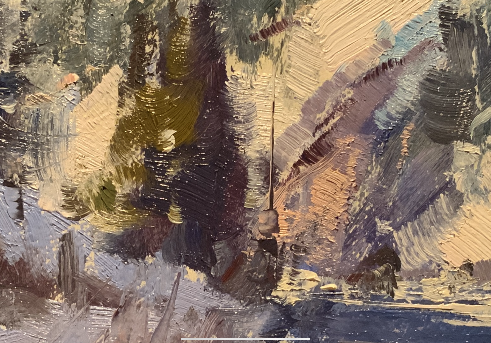
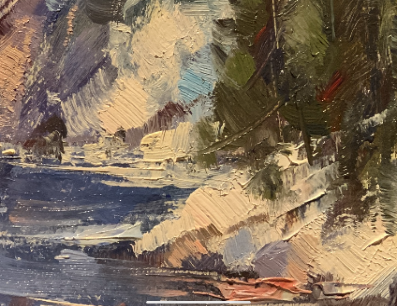
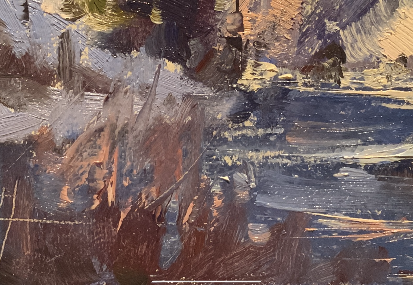
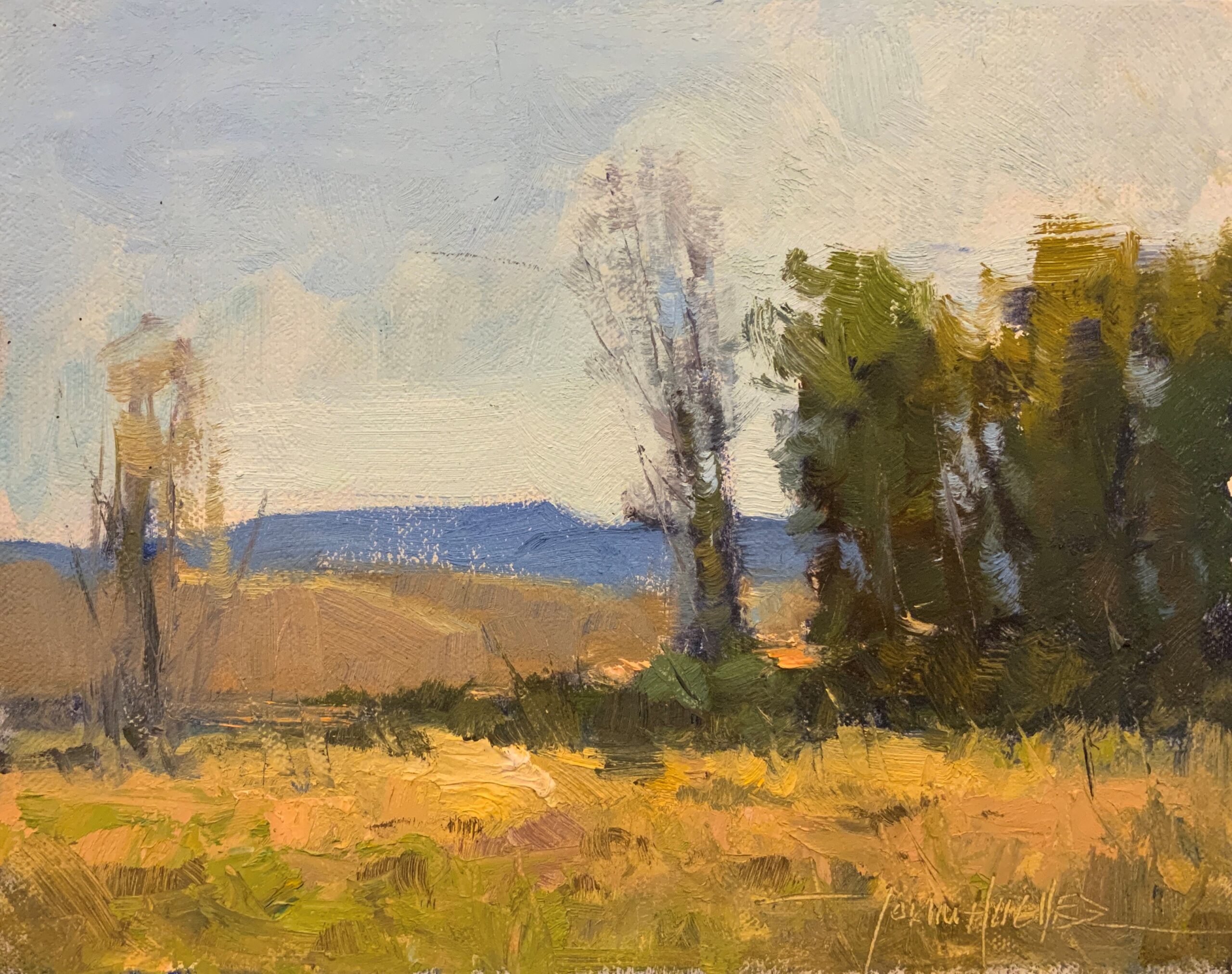
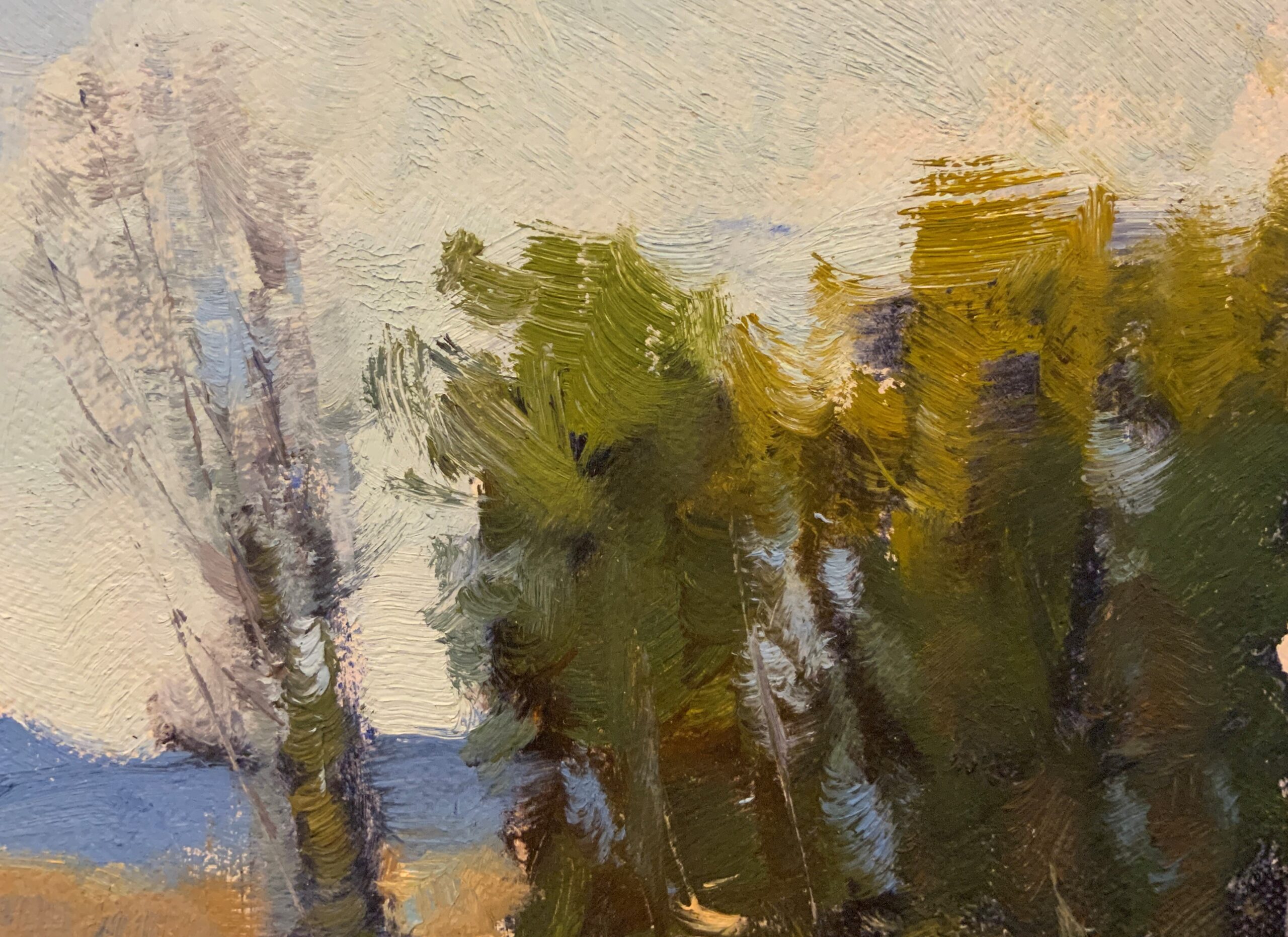
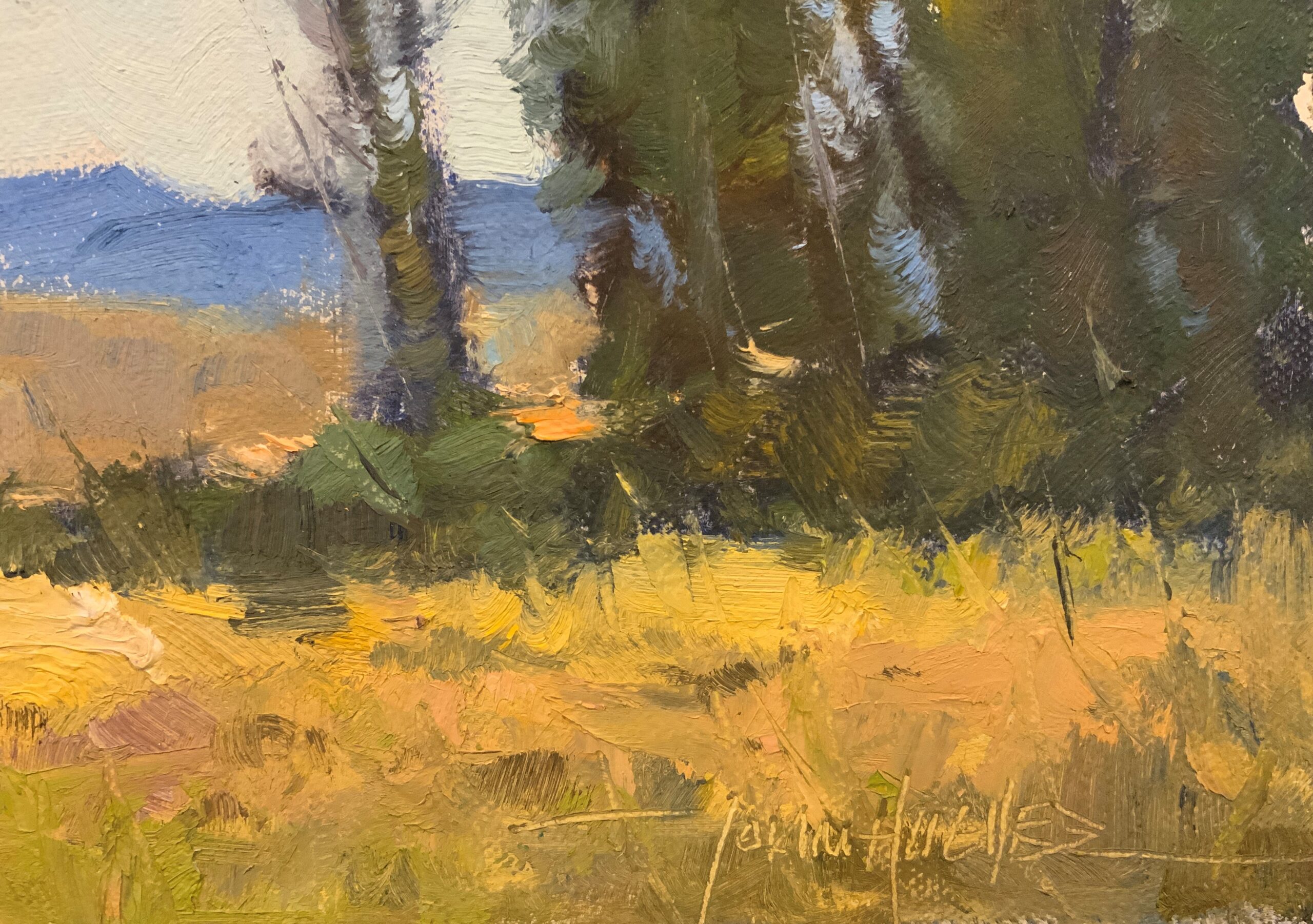
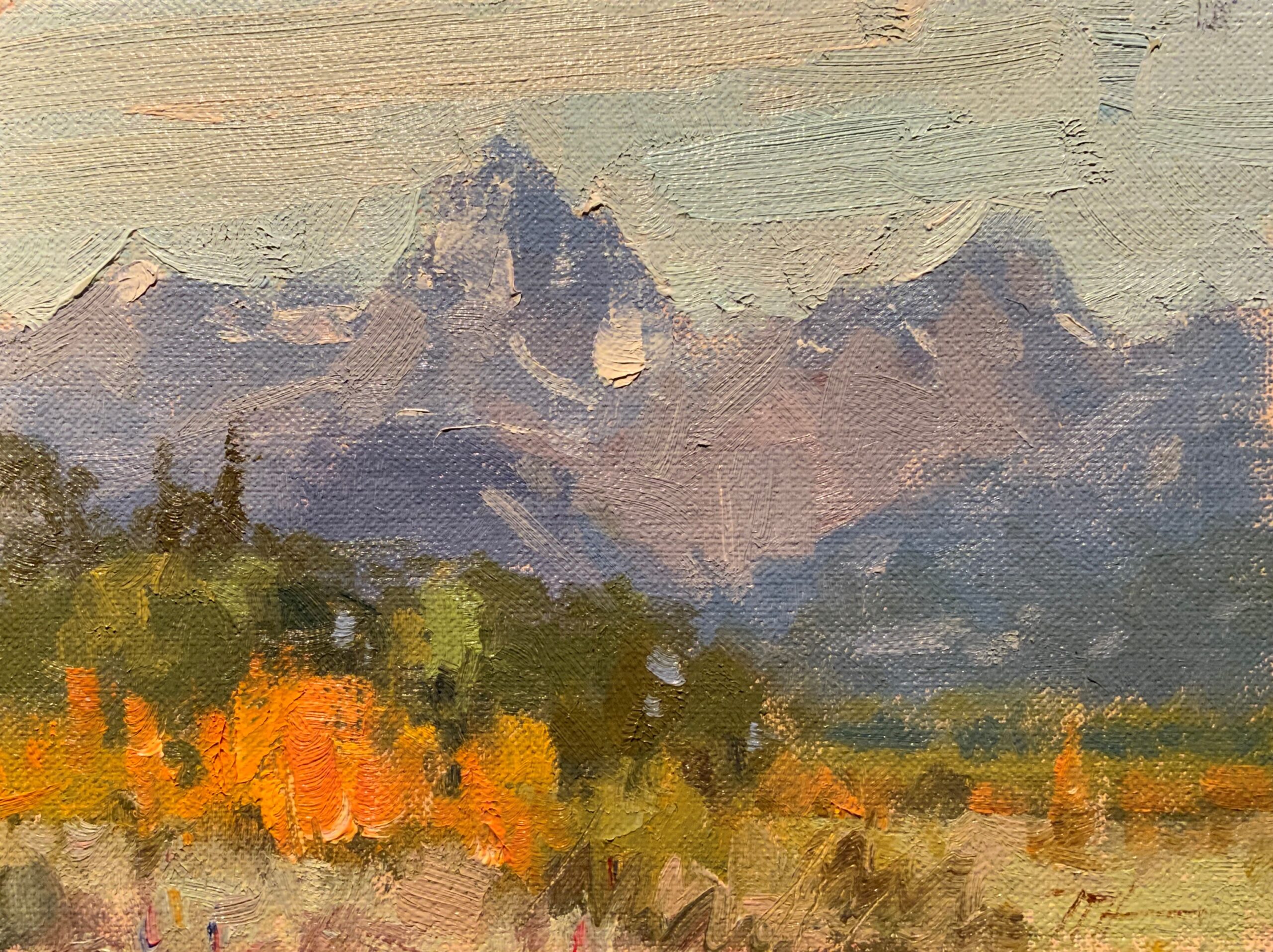
Above is a scene from a painting trip to the Tetons that consisted of a week of half-hour studies, one after another. Sometimes I’d paint in one direction, and then turn around and get another one knocked out with the same palette and used brushes.
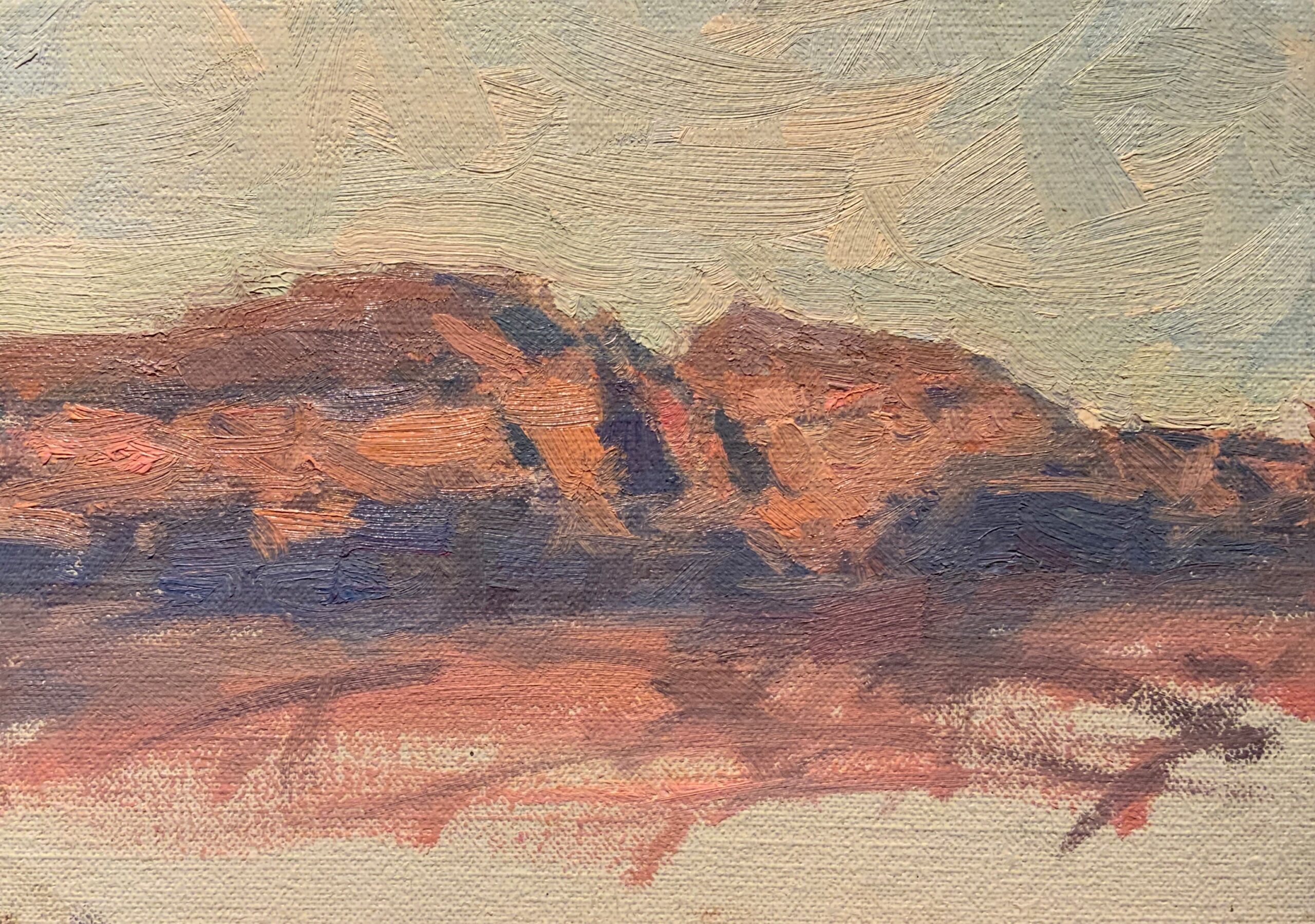
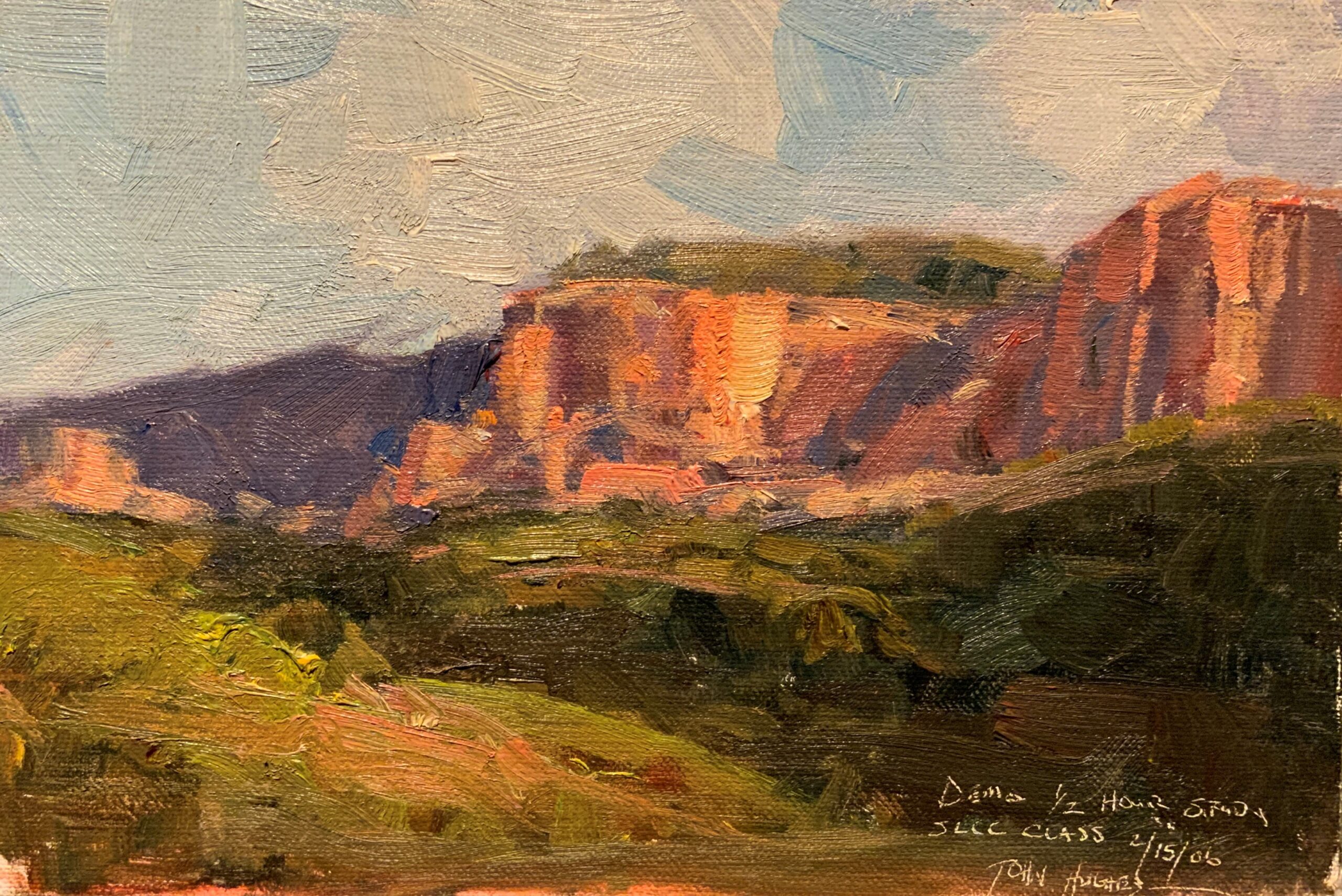
Besides improving your brushwork, these painting exercises will go a long way in improving your overall confidence as you pursue your art goals. Please feel free to leave a comment about your efforts.
Until next time,
John
And browse more free articles here at OutdoorPainter.com



